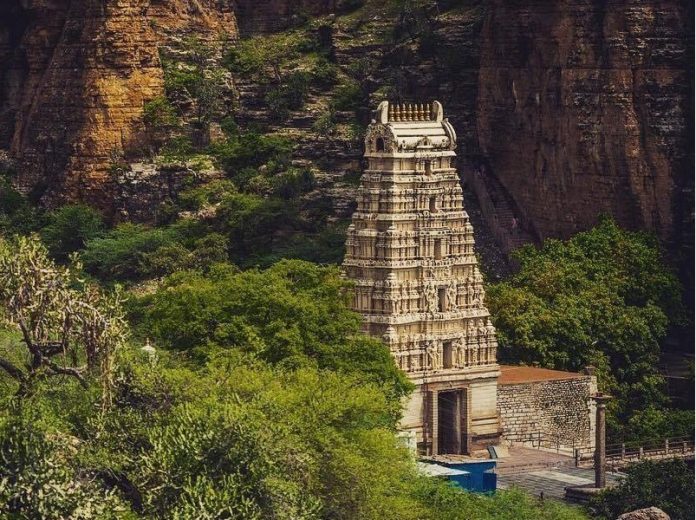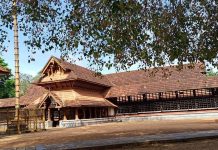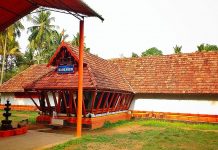Nestled in the heart of the Banaganapalli village, in the Kurnool district of Andhra Pradesh, India, the Yaganti Temple, officially known as the Sri Uma Maheshwara Temple, is a treasure trove of mythology, architecture, and natural wonders.
This ancient temple is dedicated to Lord Shiva, and its history is entwined with intriguing legends that have stood the test of time. With a unique blend of spirituality and natural beauty, the Yaganti Temple offers a oneofakind experience for pilgrims and tourists alike.
History and Legends:
The history of Yaganti Temple is a tapestry of intriguing legends and a rich historical legacy. Constructed in the 15th century by King Harihara Bukka Raya of the Sangama Dynasty, a part of the Vijayanagara Empire, this temple stands as a testament to the architectural prowess of its time. What sets this temple apart is the fusion of Vaishnavaite traditions in its construction, a unique blend of two major sects of Hinduism.
One fascinating legend tells the tale of Sage Agastya, who aspired to build a temple for Lord Venkateswara on this very site. However, a hurdle arose when the idol created for Lord Venkateswara had a broken toe nail, making it impossible to install. Disheartened by this setback, Sage Agastya embarked on a penance for Lord Shiva. Responding to his devotion, Lord Shiva appeared and suggested that the place was more suited to Him, resembling the sacred abode of Kailash. Upon Agastya’s request, Shiva took the form of Lord Uma Maheswara, with Goddess Parvathi, in a single stone, fulfilling the sage’s desire.
Another captivating tale recounts the devotion of Chitteppa, an ardent worshiper of Shiva. In a divine encounter, Shiva appeared before him in the form of a tiger. Recognizing the divine presence, Chitteppa jubilantly exclaimed, “Neganti Shivanu ne kanti,” meaning “I saw Shiva, I saw!” He danced with joy, and nearby lies a cave known as Chitteppa’s Cave, bearing testimony to this remarkable event.
The temple’s historical significance extends to being one of the temples patronized by great dynasties of India. Every year, Maha Shivaratri is celebrated with great fervor, drawing a multitude of devotees from all corners of Andhra Pradesh. The main deities revered here are Shiva, Parvati, and Nandi, symbolizing the essence of devotion and divine companionship. The temple is located 14 km away from Banaganipalli in Kurnool district. It is worth noting that the saint Lord Veerabrahmendra Swami resided at this sacred site for a period and authored his prophetic work known as “Kalagnanam,” further adding to the temple’s historical legacy.
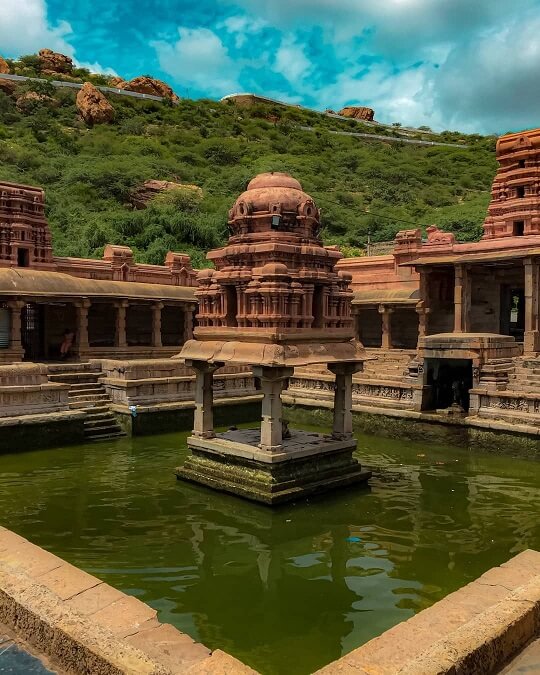


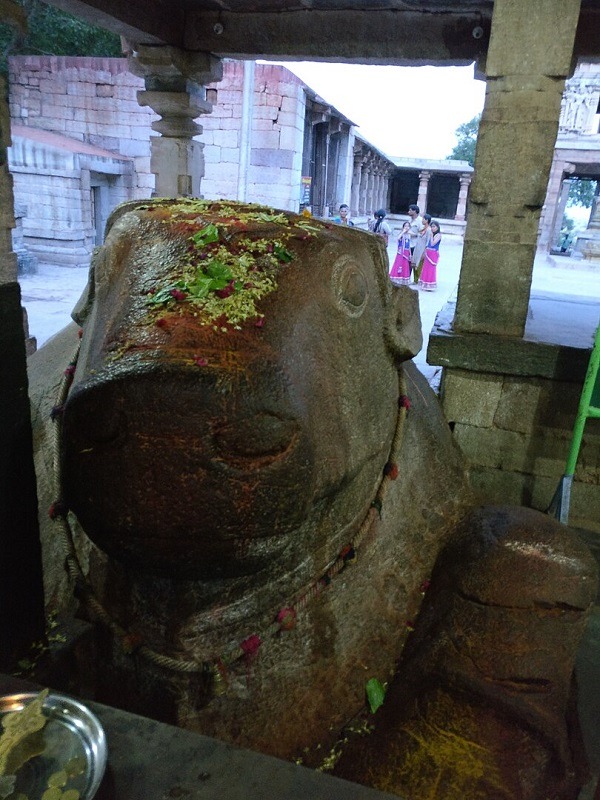
Architectural Wonders and Sacred Features:
Yaganti Temple is not only a site of historical and mythological significance but also boasts exceptional architectural marvels and sacred features.
Pushkarini:
A striking feature of the temple is its Pushkarini, a small pond located on the temple premises. What sets this Pushkarini apart is the source of its water. Fresh and sweet, the water flows from the hills into the Pushkarini through the mouth of a Nandi, the sacred bull. The perpetuity of this water source throughout the year remains a mystery, adding an air of wonder to the temple’s surroundings. The craftsmanship displayed in the temple’s architecture, particularly the sculpture, is a testament to the skills of ancient Viswakarma Sthapathis. Devotees who take a holy bath in the Pushkarini believe it to be highly beneficial, and it is customary to offer tributes to Lord Shiva after this purifying ritual.
Caves:
The temple complex is not limited to the shrine alone. It also features several caves, each with its unique significance.
1. Agastya Cave: This cave holds immense importance as it was here that Sage Agastya performed his penance for Lord Shiva. To reach the cave, one must ascend 120 steep steps. Inside, a murti to Devi is enshrined, inviting worship and reverence.
2. Venkateswara Cave: In this cave, a damaged murti of Lord Venkateswara can be found. Although the steps leading to this cave are steep, they are more accessible compared to those of Agastya Cave. According to the legend, this murti was present in this cave even before the construction of the famous Tirumala Venkateswara Temple. Unfortunately, the murti is damaged near the foot, rendering it unfit for worship. Sri Sri Potuluri Veera Brahmendra Swami, in his Kala Gynanam, suggests that this place can serve as an alternative to Tirupati.
3. Veera Brahmam Cave: This cave is historically significant as it was the place where Saint Sri Madvirat Potuluri Veera Brahmendra Swamy penned some of his prophecies, known as Kala Gnaanam. The cave’s entrance is relatively low, requiring visitors to bend halfway to enter, adding an element of adventure to the exploration of this sacred site.
Natural Wonders:
The Yaganti Nandi:
One of the most intriguing features of the temple is the monolithic Nandi statue, carved out of a single rock. This Nandi is said to be continuously growing, mystifying both devotees and scientists. The growth of the Nandi is attributed to the belief that it represents the faith and devotion of the devotees. The statue is a symbol of the inseparable bond between Lord Shiva and Nandi, his trusted mount.
Festivals at Yaganti Temple:
The primary and most significant festival celebrated at the Yaganti Temple is Maha Shivratri. This grand festival typically falls in the months of February or March and draws an immense gathering of devotees and pilgrims from various parts of the country and even from abroad. Maha Shivratri is a ceremonial celebration that adds vibrant colors to the spiritual tapestry of the temple, filling the air with devotion and fervor.
Temple Timings:
The Yaganti Temple is open for devotees and visitors from 6 AM to 1 PM in the morning and from 3 PM to 8 PM in the evening.
How to Reach Yaganti Temple:
Yaganti Temple, nestled in the scenic landscapes of Andhra Pradesh, is accessible through various modes of transportation:
By Air:
The nearest airport to Yaganti is the Banaganipalli Airport, which is approximately 14 kilometers away. For travelers coming from a greater distance, the Kempegowda International Airport in Bengaluru is also an option..
By Train:
The nearest railway station is the Banaganipalli Railway Station, located at a distance of about 14 kilometers from Yaganti. Another convenient option is the Nandyal Railway Station, which is wellconnected to various cities in India.
By Road:
Yaganti is accessible by road and is wellconnected to major cities in Andhra Pradesh. Travelers can reach Yaganti by bus or hire a taxi from nearby cities like Nandyal, Kurnool, and Banaganipalli.


























